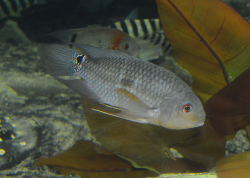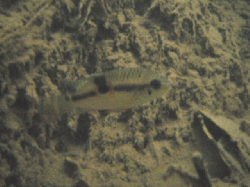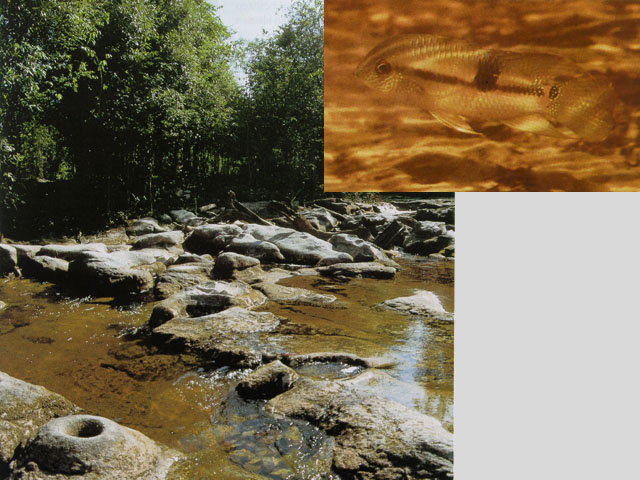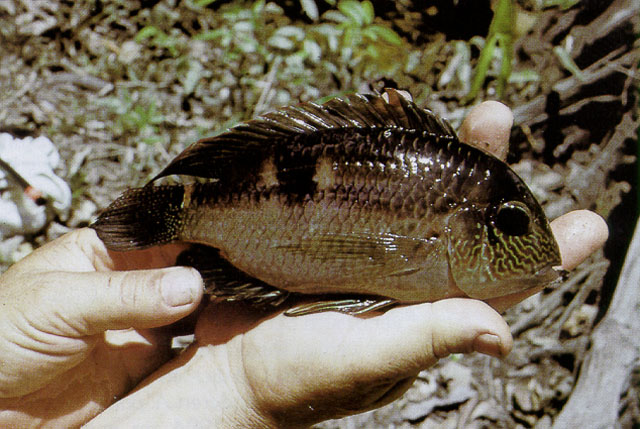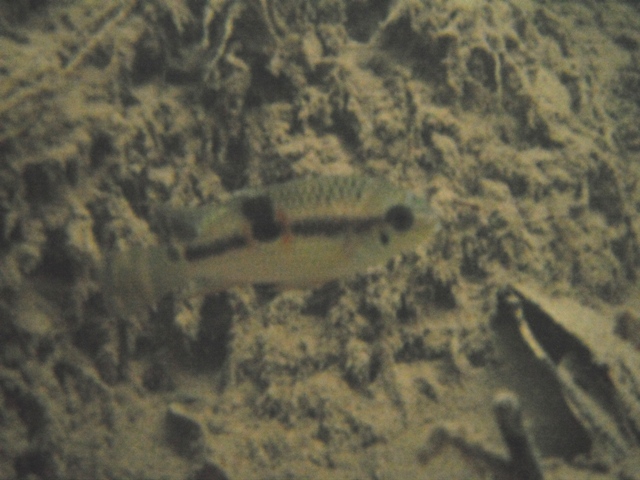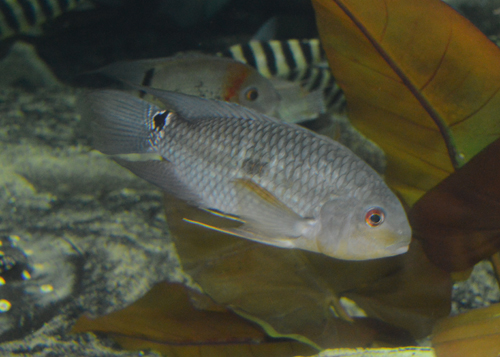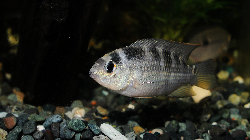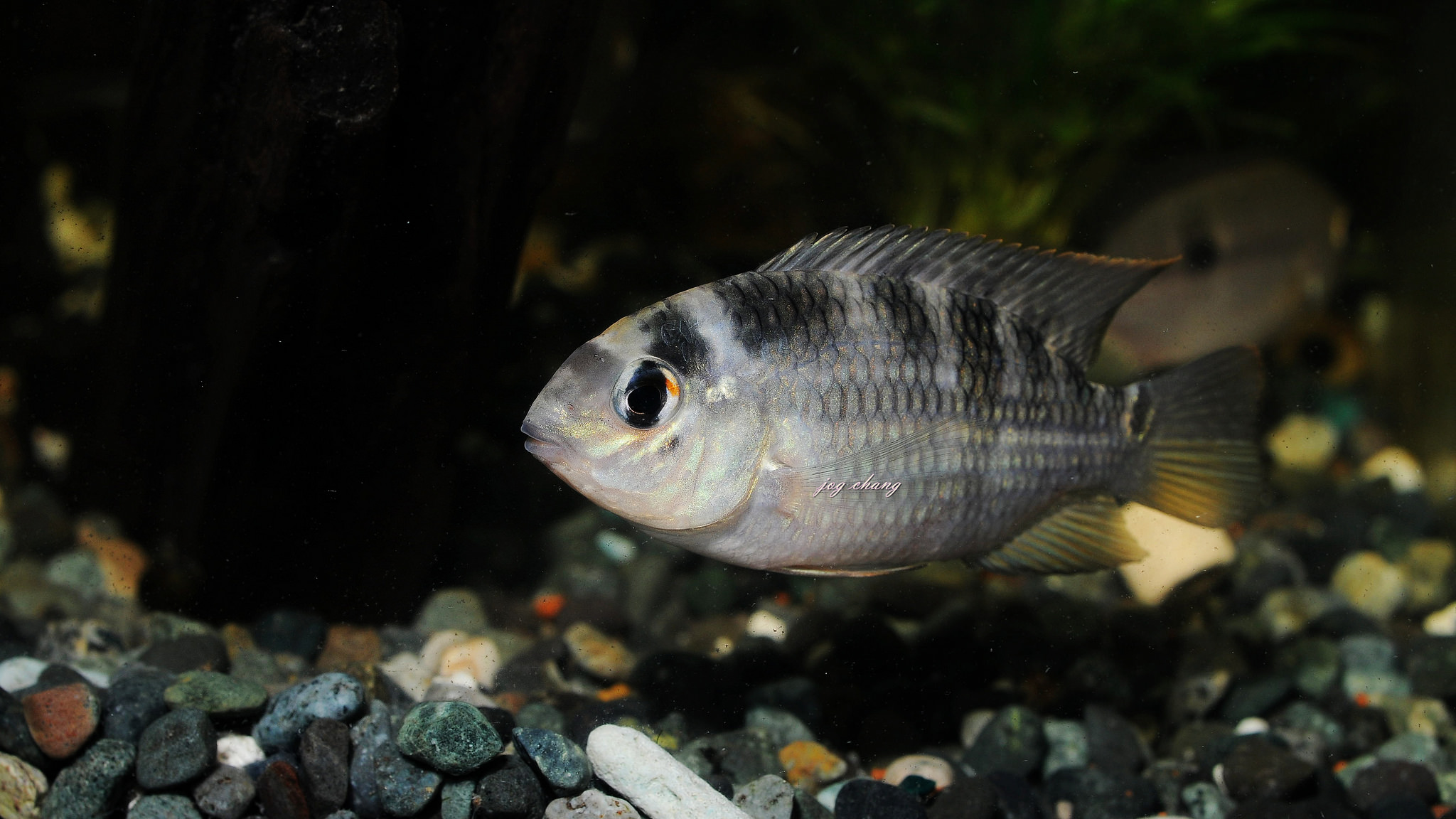Aequidens pallidus (Heckel, 1840)
Description
This species is moderately large (to c. 14.0 cm) with triserial predorsal scale pattern, relatively long pectoral fin (36.6-44.6% of SL) and 25-26 scales in the E1 row. It is most similar to A. tubicen, both of which have an enhanced, wide light spot anterior to the caudal spot, lateral band high on side, posteriorly positioned midlateral spot, and high vertebral count (14 + 13 = 27). A. pallidus differs from A. tubicen in the colour pattern, having a supraorbital spot, (vs. none in A. tubicen) and a normal cheek spot (A. tubicen has a preopercular spot). In this species the posterior part of the lateral band is uninterrupted at all sizes (vs. divided into blotches in A. tubicen). Aequidens pallidus, though resembling A. diadema, can be distinguished from the latter by having higher E1 scale row count 25-26 (vs. 24); much narrower dark margins on dorsal flank scales; and, more posteriorly positioned midlateral spot (through E3 scales 12-15 instead of c. 10-13) (Ref. 86501).
Common Names
Taxonomic Hierarchy
Kingdom: Animalia
Phylum: Chordata
Class: Teleostei
Order: Cichliformes
Family: Cichlidae
Genus: Aequidens
Species: Aequidens pallidus (Heckel, 1840)
Climate Zone
Location
Biology
Collected from lotic black to clear water: in Rio Uatumá, this species was collected from marginal pools in rapids after the Balbina dam was closed and the river level dropped considerably below normal low water Ievel; Río Preto da Eva site was a relatively slow flowing small forest stream, while the Igarape Tarumázinho site was a swift flowing forest stream. Although collections indicate swamps and lakes, this species has been collected mostly in running water. Reported food items of specimens from Río Negro were chiefly fish and detritus (Ref. 86501). Inhabits rivers (Ref. 12251). Maximum length 20.0 cm TL (Ref. 40602).
Habitat
benthopelagic
